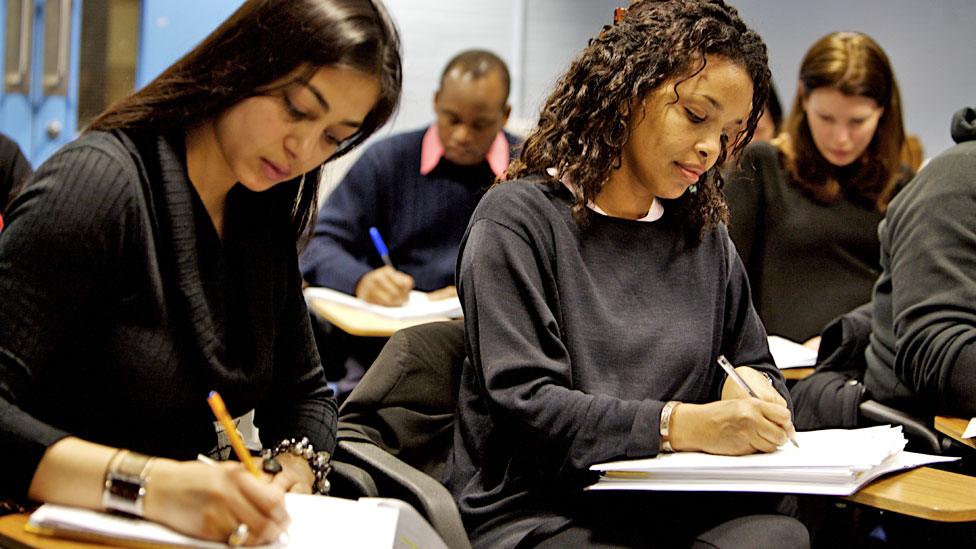Three in four London students 'from ethnic minorities by 2030'
- Published

Almost three quarters of university students from London will be from ethnic minorities by the end of the next decade, say researchers.
The analysis, based on demographic changes and university entry rates, shows 27% of students from London will be white - down from 37% at present.
White students will still be the biggest ethnic group - followed by 21% from African backgrounds, up from 17%.
The report, from a university access group, forecasts "hyper-diversity".
Londoners have high rates of university entry - with almost one in five of all students across the UK coming from the city.
Changing demographics
The report - from Access HE - reflects a growing ethnic minority population in the school system and says young people from black and Asian families are more likely to apply for university.
"We are witnessing hyper-diversity among the student body in London, where diversity is the norm and not the exception," says the report.
"Based on existing evidence, we can expect a significant increase in the number of young students entering higher education by 2030, and an increase in the diversity of these students... nearly 75% being non-white."

This is going to be an era of "hyper-diversity" in the university population, says report
There is a forecast of a particular growth in Londoners from African and mixed-race backgrounds going to university.
The number of white students is expected to increase, but not as much as other groups - so that it will become a smaller proportion of the total.
There will be an increase in the proportion of students from Bangladeshi backgrounds, who will become the biggest Asian group, with 8% of London students.
No majority
While African students are expected to become the second largest ethnic group, the proportion of students from a Caribbean background will fall from 6% to 4%.
The number of Indian students will fall from 7% to 4%, while Pakistani students will remain at 5%.
The prediction is of a future with no ethnic group being a majority.
This means about a quarter of students from London will be white, a quarter black, a quarter Asian and a quarter from other groups or from a mix of backgrounds.
The study, covering young people from state and private schools from outer and inner London, has been produced by Access HE, which works with universities and colleges on widening access.
Students who will go to university at the end of the next decade are currently in primary school, and the analysis is based on demographic changes, university figures from the Higher Education Statistics Agency and the different levels of university participation of ethnic groups.
The outcome could be different if these participation rates changed - for example, if more white working class youngsters applied to university, from their current low levels.
The study predicts more students from poorer backgrounds, with many expected to be the first in their families to go to university - and the report says that universities will need to make sure they have support in place.
There could also be changes in demand for subjects.
Ethnic minority students are particularly likely to apply for medicine, law, business and computing courses - and less likely to apply for subjects such as history or modern languages.
Graeme Atherton, head of Access HE, says that as well as London's student population changing, this demographic trend is going to "drive diversity" in universities in other parts of the United Kingdom.